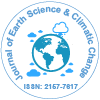Nuestro grupo organiza más de 3000 Series de conferencias Eventos cada año en EE. UU., Europa y América. Asia con el apoyo de 1.000 sociedades científicas más y publica más de 700 Acceso abierto Revistas que contienen más de 50.000 personalidades eminentes, científicos de renombre como miembros del consejo editorial.
Revistas de acceso abierto que ganan más lectores y citas
700 revistas y 15 000 000 de lectores Cada revista obtiene más de 25 000 lectores
Indexado en
- Índice de fuentes CAS (CASSI)
- Índice Copérnico
- Google Académico
- sherpa romeo
- Acceso en Línea a la Investigación en Medio Ambiente (OARE)
- Abrir puerta J
- Revista GenámicaBuscar
- TOC de revistas
- Directorio de publicaciones periódicas de Ulrich
- Acceso a la Investigación Global en Línea en Agricultura (AGORA)
- Centro Internacional de Agricultura y Biociencias (CABI)
- Búsqueda de referencia
- Universidad Hamdard
- EBSCO AZ
- OCLC-WorldCat
- Invocaciones de proquest
- Catálogo en línea SWB
- publones
- Pub Europeo
- ICMJE
Enlaces útiles
Revistas de acceso abierto
Comparte esta página
Abstracto
Beekeeping as Integrated Watershed Conservation and Climatic Change Adaptation: An Action Research in Boredo Watershed
Kumsa T and Gorfu B
The viability of productive conservation depends on efforts to manage economic and ecological factors to ensure that the relationship between communities and environment could be sustained. Beekeeping is linking conservation and local livelihoods based on the principle that watershed pay for itself by generating sustainable economic benefits for local communities. The study revealed that by increasing beekeeping skill, honey producers in the watershed realized the value and the need to conserve watershed as they obtained alternative income from honey production as high value commodity. Honey producers have traditional culture to maintain diverse floral resources around their homesteads and farm boundaries designed to increase honey production thus help to enhance watershed conservation and climate change adaption. Quality honey was harvested through adopting good watershed rehabilitation, standard colony management and harvesting methods. An average of 15.5 kg of honey was harvested per harvesting season from intermediate hive. Therefore, if watershed conservation and livelihood preservation are to occur, it is important to bring the voices of honey producers to the forefront of watershed conservation efforts. Given the opportunity and potentials for increased export for honey in Ethiopia, it was recommended that the government at all levels should provide technical services to align improved beekeeping to watershed conservation so that honey production is increased and sustained.
Revistas por tema
- Agricultura y acuicultura
- Alimentación y Nutrición
- Bioinformática y biología de sistemas
- Bioquímica
- Ciencia de los Materiales
- Ciencia general
- Ciencias Ambientales
- Ciencias Clínicas
- Ciencias farmacéuticas
- Ciencias Médicas
- Ciencias Sociales y Políticas
- Ciencias Veterinarias
- Enfermería y atención sanitaria
- Física
- Genética y biología molecular
- Geología y Ciencias de la Tierra
- Ingeniería
- Inmunología y Microbiología
- Química
Revistas clínicas y médicas
- Anestesiología
- Biología Molecular
- Cardiología
- Cirugía
- Cuidado de la salud
- Dermatología
- Diabetes y Endocrinología
- Enfermedades infecciosas
- Enfermería
- Gastroenterología
- Genética
- Inmunología
- Investigación clínica
- Medicamento
- Microbiología
- Neurología
- Odontología
- Oftalmología
- Oncología
- Pediatría
- Toxicología

 English
English  Chinese
Chinese  Russian
Russian  German
German  French
French  Japanese
Japanese  Portuguese
Portuguese  Hindi
Hindi